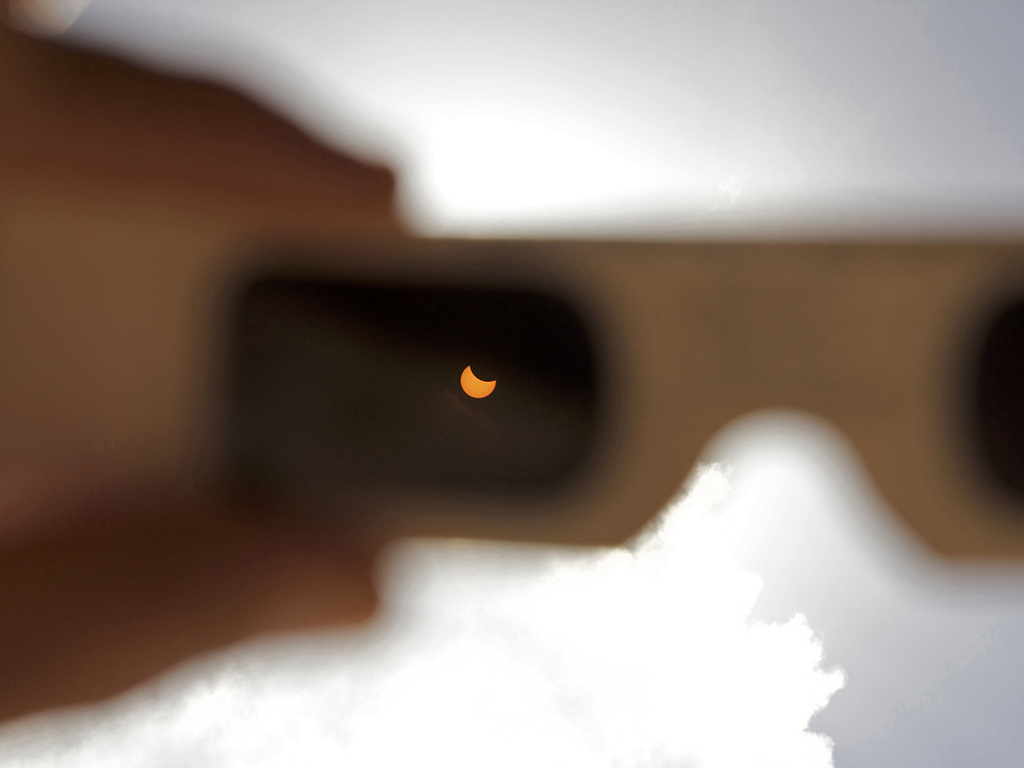
Not in the 2017 Solar Eclipse's Path? An Astrophysicist Has Some Advice

Paul Sutter is an astrophysicist at The Ohio State University and the chief scientist at COSI Science Center. Sutter leads science-themed tours around the world at AstroTouring.com. Sutter contributed this article to Space.com's Expert Voices: Op-Ed & Insights.
Let's say you're not lucky enough to find yourself along the narrow strip of totality during the coming solar eclipse on Aug. 21. Don't feel bad — you still may get a stellar view. Everyone in the continental United States — as well as Canada and Mexico — will get to enjoy seeing a bite taken out of the sun on that afternoon.
Of course, the closer you get to the totality path the better your experience, but a partial solar eclipse is still pretty awesome and something that only comes along every few years. So get out there and enjoy it! [Total Solar Eclipse 2017: When, Where and How to See It (Safely)]
If you live in New England or along the Mexican border, you'll get the worst view with only about 65 percent of the sun covered by the moon. The closer you get to the northwest-to-southeast line, though, the more spectacular your show will be, with almost all states enjoying at least an 80 percent coverage.
No matter where you are, the entire eclipse event will last about three hours, from the moment the moon first touches the disk of the sun, to its maximum extent an hour and a half in, to the point where the sun and moon separate and continue on their solitary journeys.
I can't stress this enough: unless you're seeing the brief moments of 100 percent coverage, or totality, it is not safe to look directly at the sun without some serious eyewear. Sunglasses are not nearly enough. Even 400 of your favorite lenses stacked together wouldn't do the trick. The same UV radiation that gives you nasty sunburns after forgetting to reapply at the beach can — and will — damage your retinas, and the sheer volume of visible light will literally cook your rods and cones.
You absolutely need specialized solar viewing glasses that only let through one part in 300,000 of the sun's light. If you can't get ahold of a pair — not for lack of trying on the part of NASA and community organizations — there are still ways to safely view the partial eclipse.
Get the Space.com Newsletter
Breaking space news, the latest updates on rocket launches, skywatching events and more!
Instead of looking at the sun, if you don't have safe solar filters, you'll need to project an image of it. This can be accomplished with a telescope, though you should only attempt this if you are extremely adept at using one safely, and if it's specially designed or modified for solar observations (check your local astronomy club to see if they'll have any setups).
You can also fashion a simple pinhole camera. Take a page of thick cardstock and cut a square out, tape a piece of aluminum foil over the square, and use a needle or pin to poke a tiny hole in the foil. Voila! Let the sunlight fall onto the page, and you'll see projected onto the ground the partial sunlight in all its partial glory.
Editor's Note: Here are some of the best places to turn your eclipse trip into an outdoor adventure, according to our sister-site, Active Junky. Most campgrounds are booked, but here are great eclipse-viewing spots that are off the grid.
Join our Space Forums to keep talking space on the latest missions, night sky and more! And if you have a news tip, correction or comment, let us know at: community@space.com.

Paul M. Sutter is a cosmologist at Johns Hopkins University, host of Ask a Spaceman, and author of How to Die in Space.
